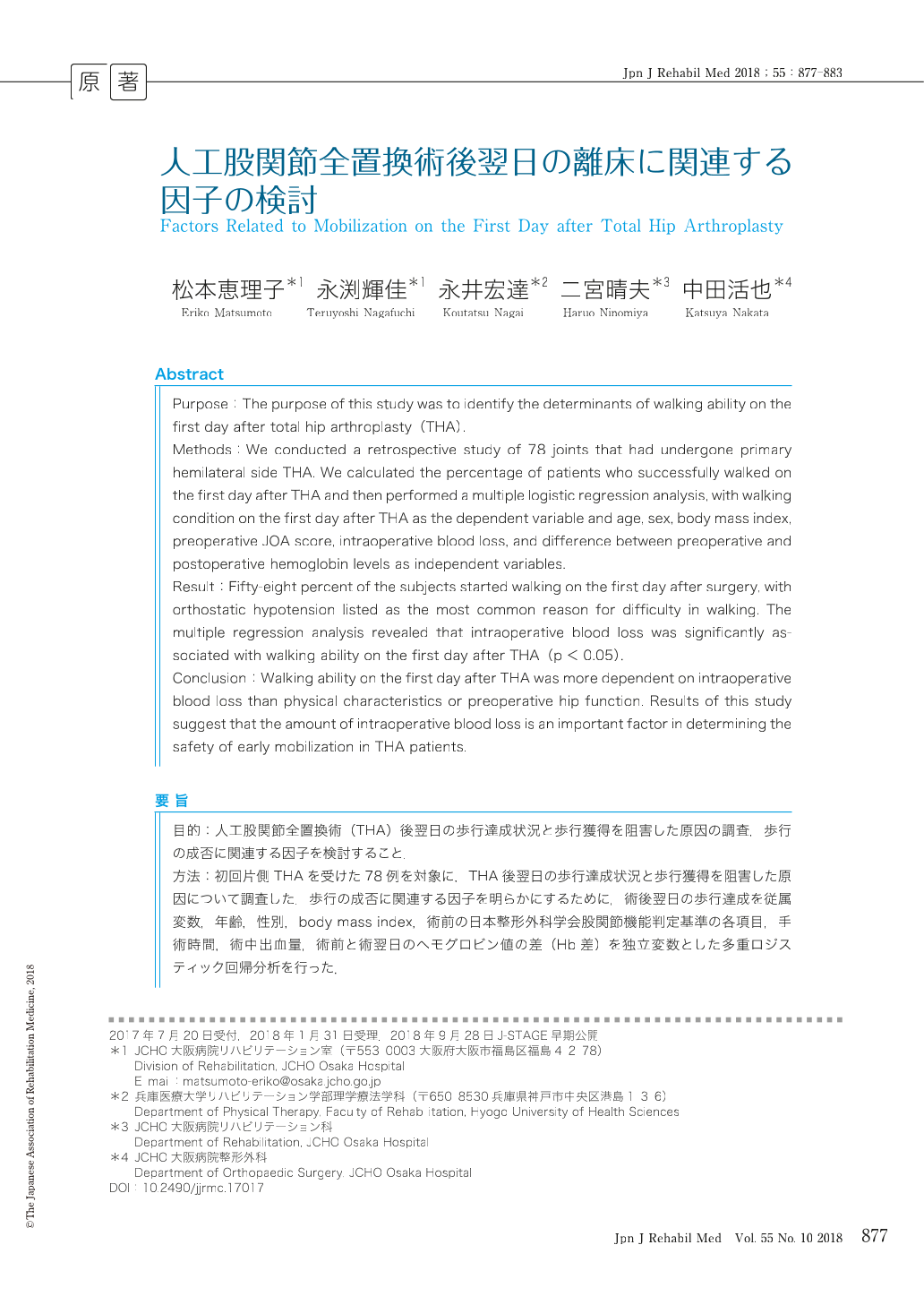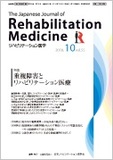Japanese
English
- 販売していません
- Abstract 文献概要
- 1ページ目 Look Inside
- 参考文献 Reference
要旨
目的:人工股関節全置換術(THA)後翌日の歩行達成状況と歩行獲得を阻害した原因の調査,歩行の成否に関連する因子を検討すること.
方法:初回片側THAを受けた78例を対象に,THA後翌日の歩行達成状況と歩行獲得を阻害した原因について調査した.歩行の成否に関連する因子を明らかにするために,術後翌日の歩行達成を従属変数,年齢,性別,body mass index,術前の日本整形外科学会股関節機能判定基準の各項目,手術時間,術中出血量,術前と術翌日のヘモグロビン値の差(Hb差)を独立変数とした多重ロジスティック回帰分析を行った.
結果:THA後翌日の歩行達成率は57.7%であり,歩行獲得を阻害した原因は起立性低血圧が54.5%で最も多かった.また,THA後翌日の歩行の成否には術中出血量が有意に関連していた.
結論:THA後翌日の歩行の成否には,術中出血量が有意に関連しており重要な指標となることが明らかとなった.
Purpose:The purpose of this study was to identify the determinants of walking ability on the first day after total hip arthroplasty (THA).
Methods:We conducted a retrospective study of 78 joints that had undergone primary hemilateral side THA. We calculated the percentage of patients who successfully walked on the first day after THA and then performed a multiple logistic regression analysis, with walking condition on the first day after THA as the dependent variable and age, sex, body mass index, preoperative JOA score, intraoperative blood loss, and difference between preoperative and postoperative hemoglobin levels as independent variables.
Result:Fifty-eight percent of the subjects started walking on the first day after surgery, with orthostatic hypotension listed as the most common reason for difficulty in walking. The multiple regression analysis revealed that intraoperative blood loss was significantly associated with walking ability on the first day after THA (p<0.05).
Conclusion:Walking ability on the first day after THA was more dependent on intraoperative blood loss than physical characteristics or preoperative hip function. Results of this study suggest that the amount of intraoperative blood loss is an important factor in determining the safety of early mobilization in THA patients.

Copyright © 2018, The Japanese Association of Rehabilitation Medicine. All rights reserved.


